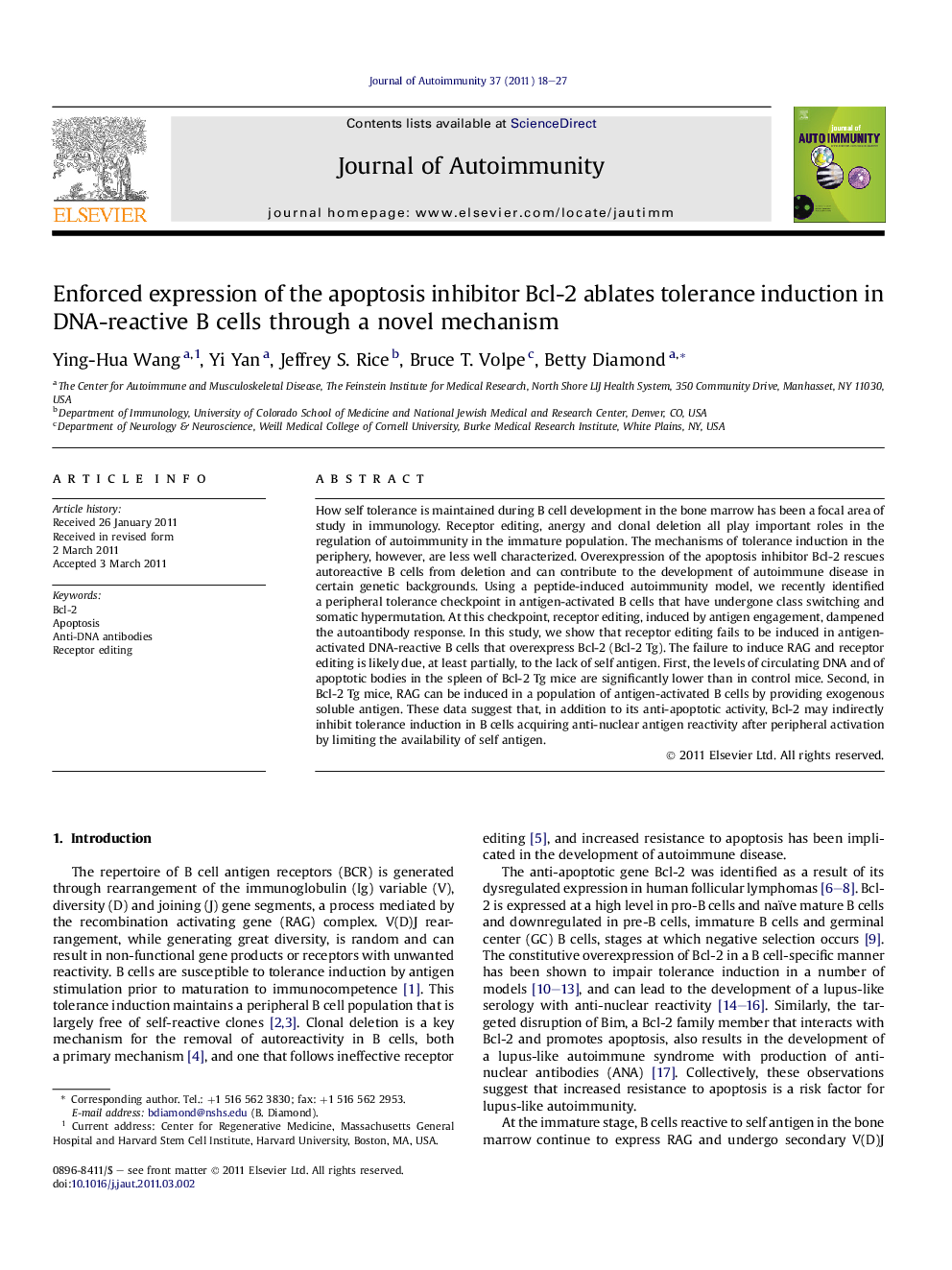| Article ID | Journal | Published Year | Pages | File Type |
|---|---|---|---|---|
| 3368022 | Journal of Autoimmunity | 2011 | 10 Pages |
How self tolerance is maintained during B cell development in the bone marrow has been a focal area of study in immunology. Receptor editing, anergy and clonal deletion all play important roles in the regulation of autoimmunity in the immature population. The mechanisms of tolerance induction in the periphery, however, are less well characterized. Overexpression of the apoptosis inhibitor Bcl-2 rescues autoreactive B cells from deletion and can contribute to the development of autoimmune disease in certain genetic backgrounds. Using a peptide-induced autoimmunity model, we recently identified a peripheral tolerance checkpoint in antigen-activated B cells that have undergone class switching and somatic hypermutation. At this checkpoint, receptor editing, induced by antigen engagement, dampened the autoantibody response. In this study, we show that receptor editing fails to be induced in antigen-activated DNA-reactive B cells that overexpress Bcl-2 (Bcl-2 Tg). The failure to induce RAG and receptor editing is likely due, at least partially, to the lack of self antigen. First, the levels of circulating DNA and of apoptotic bodies in the spleen of Bcl-2 Tg mice are significantly lower than in control mice. Second, in Bcl-2 Tg mice, RAG can be induced in a population of antigen-activated B cells by providing exogenous soluble antigen. These data suggest that, in addition to its anti-apoptotic activity, Bcl-2 may indirectly inhibit tolerance induction in B cells acquiring anti-nuclear antigen reactivity after peripheral activation by limiting the availability of self antigen.
